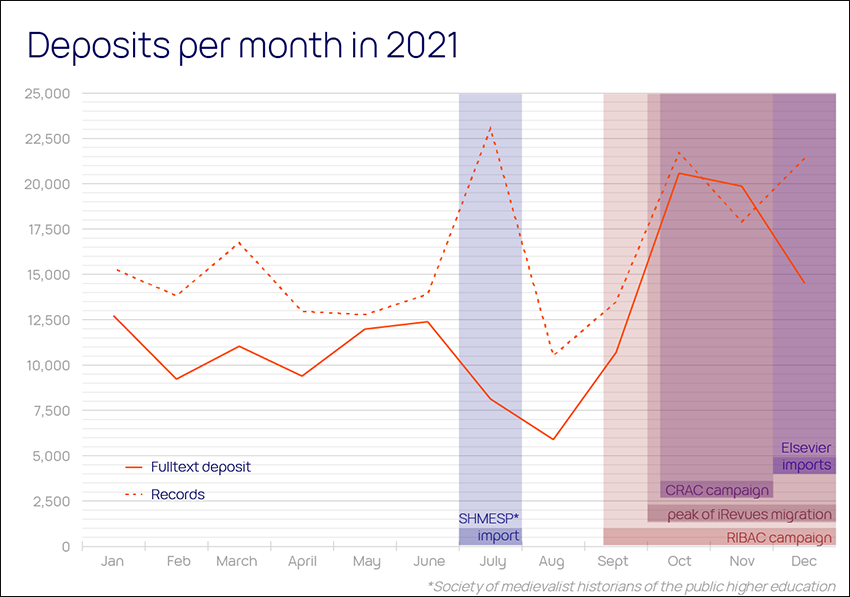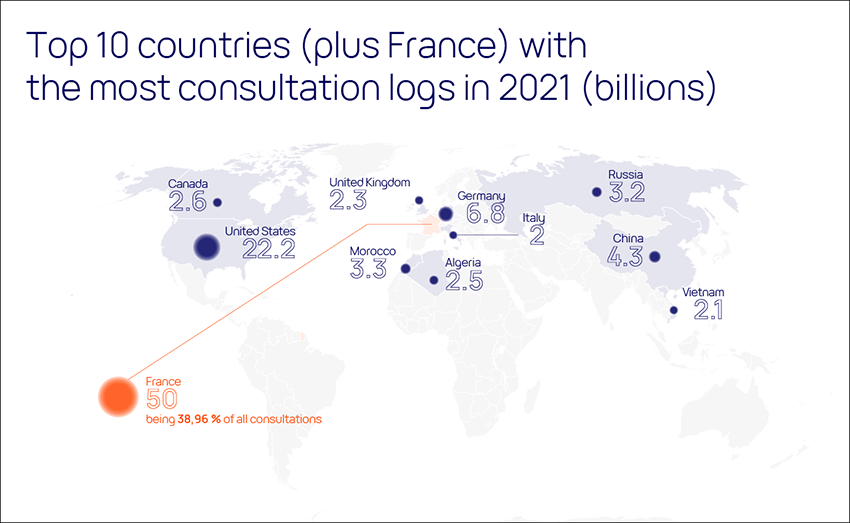The twenty years of HAL, the new logos or the setting up of the assembly of partners are probably the events in 2021 that you probably remember about the CCSD’services. The CCSD offers you to discover more by publishing its activity report (at the end of this article).
The year was of course marked by the celebration of 20 years of HAL. It was an opportunity to assess how far we have come and outline future prospects with the key parties involved in its creation and development.
At the beginning of its third decade, HAL has become the national open archive, the real “shared home of French research”. The figures speak for themselves: 85,000 active users, 130 institutional portals, 146,000 new documents in 2021 – the one million scientific documents were reached at the very beginning of 2022.

There were over 80 million file downloads in 2021 and 47 million record views.

We continued work on improving HAL interfaces, with the first phase of deployment taking place in 2022, and managing identifiers (integration of ROR into the metadata of research structures, automatic recovery of metadata associated with a SWHid, curation of metadata of ANR projects, optimisation of Author identifiers).
The portfolio of journals published on Episciences has grown by 5 new titles in 2021, bringing the total number of journals to 22. 350 articles were published in 2021. The CCSD team also successfully kicked off two Episciences projects (FNSO, OpenAIRE Nexus). For the European OpenAIRE-Nexus project, the objective is to integrate the platform into the European Open Science Cloud (EOSC): in this context, Episciences is now interconnected with Zenodo. . A formalised a service offering for the publication of diamond journals.
After a significant drop in the organization of conferences in 2020 due to the beginning of the pandemic, the activity on Sciencesconf resumes in 2021 with more than 1500 requests for creation of conferences.
All of these achievements work towards a shared goal, namely to simplify the procedures of our user communities and establish the three CCSD platforms as part of the national and international Open Science ecosystem. This led to HAL+, encompassing HAL, Episciences and Sciencesconf, being recognised as a research infrastructure in the 2021 edition of the national roadmap of the Ministry of Higher Education, Research and Innovation. Finally, year 2021 saw the implementation of a new governance model for the CCSD, validated by the Committee for Open Science (Steering Committee, orientation Committee, HAL Partners assembly). This shared and inclusive governance now involves users, i.e. researchers and institutions, in defining the strategy of the three CCSD platforms. The last brick of this new system will be laid in 2022 with the establishment of an International Scientific Council.